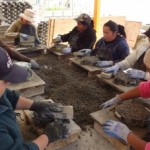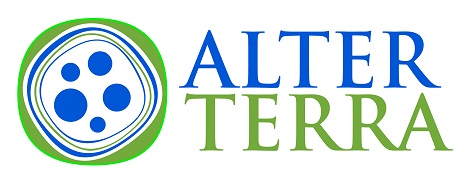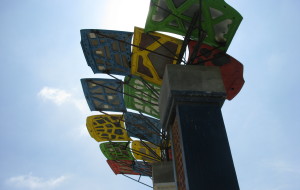Blue-Green Infrastructure
Alter Terra has created an exportable model within the North American Region by combining previously tested science-based activities that have proven supportive to the conservation of the Tijuana River Watershed, (a 1,750 square-mile binational watershed). Our organization has successfully implemented watershed-based planning, best management practices and development tools which have significantly reduced transboundary flows of sediment and trash that originate in Tijuana’s coastal canyons and discharge to the ecologically sensitive wetland ecosystems of the TRNERR in San Diego County California, a Ramsar designated Wetland of International Importance. This replicable model includes multiple activities that can be implemented for the protection of estuaries throughout North America. Alter Terra’s activities consist of many concentrated efforts that contribute to the overall goal of watershed preservation. These efforts include identification of illegal dumpsites, tracking transboundary trash flows, utilizing innovative infrastructure design to reduce transboundary sediment flows , revalorizing trash from the waste-stream, reforestation with native plants, and reducing urban runoff (including untreated sewage) through the manufacture and use of pervious (porous) concrete pavers.
Pervious pavers touch the soil at discrete points or lines preventing damage to fragile native ecosystems allowing water to percolate without concentration into the native soil below. The continuous but controlled flow of water maintains sediment in place helping to build ecological equilibrium, maintaining reservoirs of soil and water. Pervious surfaces are particularly useful to prevent the loss of highly erosive soils like the slopes on coastal canyons where the silt content is very elevated; these sources of traceable soil can be eliminated by placing substrate and pervious surfaces over traffic areas. Depending on the specific conditions of the site, pervious surfaces can control very large volumes of sediment if applied to traffic areas or drains (natural or manmade), and the volume can be calculated by the paved surface and the depth of the erosive soil.
As water permeates through the porous pavement system and into the ground, pollutants are mainly captured within the paver system and the uppermost layers of underlying soil. Permeable pavement can be very effective at eliminating many pollutants that are of concern in the Tijuana River watershed which include suspended solids, phosphorus, nitrogen, nitrates and metals.
 Our green infrastructure training project focuses on activities that create sustainable bases for increased income at the household level. We have successfully trained residents in vulnerable areas raging from the coastal canyons of Tijuana to marginalized villages in Guatemala. This project has the potential to raise the economic level of local residents while simultaneously improving human and environmental health conditions and reducing climate change related threats. The core of the project mainly targets women by providing them with skills to increase their productivity through vocational training leading to green micro-enterprise development.
Our green infrastructure training project focuses on activities that create sustainable bases for increased income at the household level. We have successfully trained residents in vulnerable areas raging from the coastal canyons of Tijuana to marginalized villages in Guatemala. This project has the potential to raise the economic level of local residents while simultaneously improving human and environmental health conditions and reducing climate change related threats. The core of the project mainly targets women by providing them with skills to increase their productivity through vocational training leading to green micro-enterprise development.



